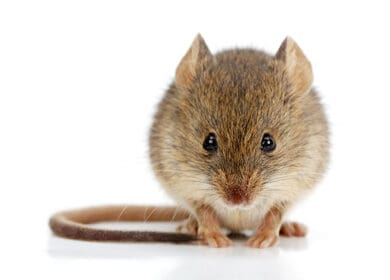DBA/2J
DBA/2J
| Strain details | |
|---|---|
| Nomenclature | DBA/2JOzarc |
| Common name | DBA/2J |
| Synonyms | DB2, D2J, D2, DBA, DBA/2 |
| Strain | Inbred |
| Coat colour | Dilute brown (a/a Tyrp1b/Tyrp1b Myo5ad/Myo5ad) |
| Species | Mouse |
| JAX stock number | 000671 |
| Location | Area Oz2 |
Strain descriptions
- MHC haplotype: H2Kd
- Complement factor: C5 deficient
- DBA/2J strain is distinct from the C57BL/6J strain and exhibits unique characteristics.
- This strain has high incidence of sterility.
- DBA/2J mice show a low susceptibility to developing atherosclerotic aortic lesions following 14 weeks on an atherogenic diet.
- This strain is homozygous for Cdh23ahl, the age-related hearing loss 1 mutation, which on this background results in progressive hearing loss that is already severe by three months of age.
- They exhibit eye abnormalities similar to human glaucoma, including iris pigment dispersion, iris atrophy, and elevated intraocular pressure.
- DBA/2J mice are susceptible to audiogenic seizures in their early age, but this decreases as they reach adulthood.
- They also exhibit calcareous pericarditis and calcified lesions in various organs.
- DBA/2J mice show affinity for methamphetamine, but intolerance to alcohol and morphine. Notably, they lack surface expression of CD94/NKG2A receptors on NK cells, which are involved in self-tolerance and recognition of target cells.
- The DBA inbred strain is the oldest of all inbred strains of mice. Dr. CC Little began inbreeding in 1909 from a mouse colony segregating for coat color. During 1929 and 1930 crosses were made among substrains, and several new substrains were established including DBA/1 and DBA/2. DBA/1 and DBA/2 differ at a large number of loci (including the MHC H2haplotype) which is most likely results from residual heterozygosity in the strain when the substrains were separated.
- DBA/2J strain was transferred from ARC to Ozgene ARC in 2023.
- DBA/2J is a widely used inbred strain that is valuable in many research areas, including cardiovascular biology, neurobiology, and sensorineural research.
Past ARC and transfer reports:
Current Ozgene ARC reports (from 01-Jun-2023)
- This strain is housed in Area Oz2/3/5
- Please see Oz2/3/5 health reports on our Biosecurity page
- These mice are sold subject to The Jackson Laboratory’s Conditions of Use and also the Australian Patent Number (2004268530). Information regarding conditions of use is available at: JAX General Terms and Conditions.
- JAX mice are the gold standard for animal model research.
- Ozgene ARC terms and Conditions
- Mouse images are representative only. Actual phenotypes may vary based on genotype, sex, age, husbandry, health status, and other factors
- See www.jax.org for more strain information.


